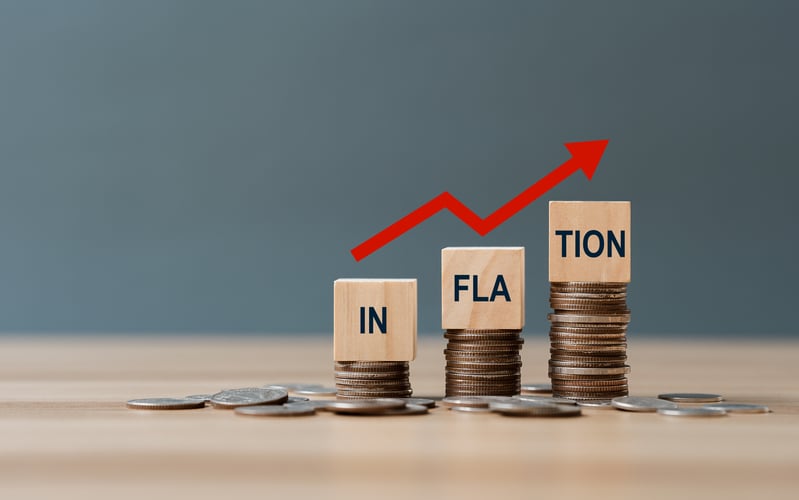

In financial planning, it's helpful to distinguish between what we can and cannot influence. We have control over our financial behaviors, plans, and strategy adjustments. However, economic cycles, market fluctuations, and policy changes remain outside our sphere of influence. Understanding this difference helps us concentrate on financial decisions that truly matter.
As some investors express concerns about a potential recession and market uncertainty increases, now seems like an appropriate time to explore how business cycles work and their impact on personal financial planning.
What is the business cycle?
Business cycles are the economy's natural movements through growth periods and recessions, tracked using measurements like GDP (Gross Domestic Product), employment figures, and industrial output. While these cycles vary in length, they typically span 5-10 years.
Since World War II, the National Bureau of Economic Research has identified twelve recessions. In the past 25 years, we've experienced three: the pandemic recession of 2020, the 2008 financial crisis, and the 2001 dot-com collapse. Of course, economists and investors have worried about many more potential recessions that never materialized.
Business cycles have lengthened since the high-inflation period of the 1970s and early 1980s. The steady growth until 2008 is often called "The Great Moderation" - a time of strong economic performance, moderate inflation, low unemployment, and cycles averaging nearly nine years.
Phases of the business cycle
Though each business cycle has unique characteristics, they generally follow four main phases:
- Expansion - The economy grows, unemployment decreases, consumer confidence strengthens, and business activity rises. GDP growth stays positive, and companies often invest in expanding their operations.
- Peak - Growth reaches its highest point. The economy operates at or near full capacity, inflation may increase, and signs of economic overheating might emerge.
- Contraction - Economic activity slows down, companies may reduce hiring or cut jobs, and GDP growth slows or turns negative. Consumer spending typically falls during this phase.
- Trough - The lowest point of the cycle, where economic decline reaches bottom before recovery begins. Unemployment usually peaks, and business confidence remains low.
These phases aren't always equal in duration. Sometimes business cycles last longer than expected, while others end suddenly.
For instance, during the 1990s cycle, the economy slowed significantly in 1995 without entering recession. The Federal Reserve achieved what's called a "soft landing" by reducing inflation without hurting economic growth.
In contrast, the 2008 financial crisis caused a rapid economic decline due to financial sector problems. Similarly, in 2020, nationwide shutdowns led to a sharp drop in economic activity.
Precisely timing business cycles is extremely difficult. This is partly why economics is sometimes called "the dismal science" - it often fails to predict recessions accurately and frequently predicts ones that never happen. Nevertheless, having a general sense of where we are in these cycles can still improve our financial decision-making.
Distinguishing between business and market cycles
Market cycles tend to be more frequent and volatile than business cycles. During a single business cycle, the stock market might experience multiple corrections, including several brief pullbacks each year, influenced by investor feelings, money availability, and factors beyond economic conditions.

This happens because markets look forward while economic data typically reflects the past. Markets respond to economic information but also react to news headlines, public sentiment, and many other factors that investors consider. As a result, markets often overreact to short-term events.
Financial planning through cycles
Instead of trying to time markets perfectly, consider these approaches to stay on track with your financial goals throughout different cycles:
Maintain a long-term perspective - When viewed over decades, short-term market movements often appear minor. They sometimes incorrectly signal economic changes. For example, the 2022 stock market decline didn't accurately predict an economic downturn.
Portfolio rebalancing - Regularly adjusting your portfolio helps you naturally "buy low and sell high" by reducing investments that have grown and adding to those that have underperformed. This systematic approach can help you navigate market cycles without making emotional decisions.
Adjust expectations by cycle phase - During late-cycle periods when prices seem high, future returns may be lower. Consider lowering your return expectations during these times rather than taking excessive risks for higher yields.
Have an emergency fund - Good financial plans acknowledge that downturns will happen. An emergency fund covering 6-12 months of expenses provides important flexibility during contractions, especially if your job security becomes uncertain.Portfolio resiliency across all phases of the business cycle
Building an appropriate investment portfolio remains essential for navigating business cycles. Different types of investments respond differently to changing economic conditions. For example, stocks typically perform well during economic expansions but struggle during contractions. Meanwhile, bonds can provide income during expansions and help balance your portfolio during contractions.
The right mix of investments differs for each person based on your time horizon, comfort with risk, and financial goals. A well-diversified portfolio might not perform as well as the best-performing investment during any specific cycle, but it also avoids the severe losses that can disrupt your financial plans.
The bottom line? Market and business cycles are natural parts of the investing experience. Rather than trying to predict each turning point, history shows that it's better to maintain a well-constructed portfolio that can weather all parts of the cycle.




